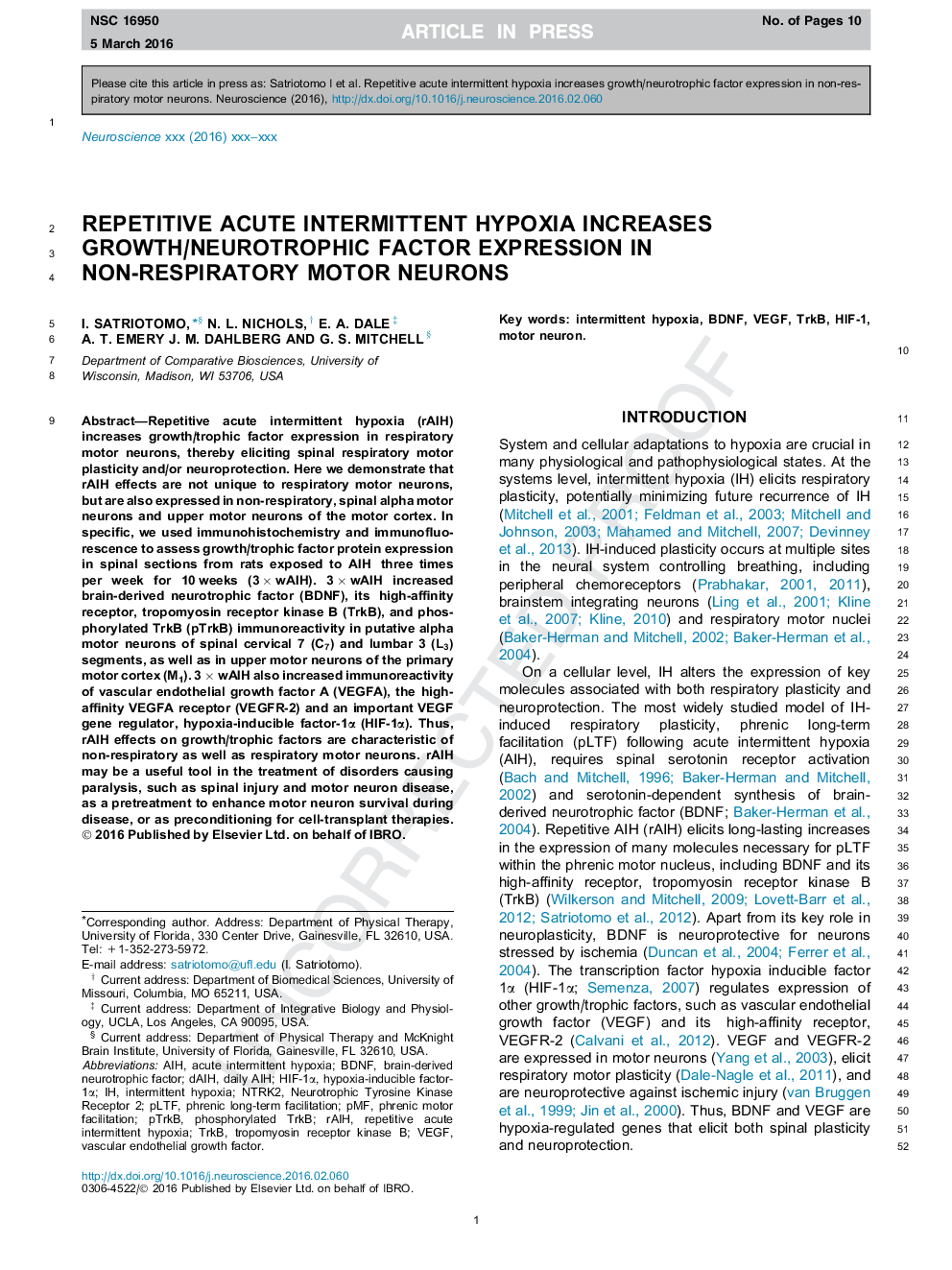| Article ID | Journal | Published Year | Pages | File Type |
|---|---|---|---|---|
| 6271236 | Neuroscience | 2016 | 10 Pages |
Abstract
Repetitive acute intermittent hypoxia (rAIH) increases growth/trophic factor expression in respiratory motor neurons, thereby eliciting spinal respiratory motor plasticity and/or neuroprotection. Here we demonstrate that rAIH effects are not unique to respiratory motor neurons, but are also expressed in non-respiratory, spinal alpha motor neurons and upper motor neurons of the motor cortex. In specific, we used immunohistochemistry and immunofluorescence to assess growth/trophic factor protein expression in spinal sections from rats exposed to AIH three times per week for 10 weeks (3 Ã wAIH). 3 Ã wAIH increased brain-derived neurotrophic factor (BDNF), its high-affinity receptor, tropomyosin receptor kinase B (TrkB), and phosphorylated TrkB (pTrkB) immunoreactivity in putative alpha motor neurons of spinal cervical 7 (C7) and lumbar 3 (L3) segments, as well as in upper motor neurons of the primary motor cortex (M1). 3 Ã wAIH also increased immunoreactivity of vascular endothelial growth factor A (VEGFA), the high-affinity VEGFA receptor (VEGFR-2) and an important VEGF gene regulator, hypoxia-inducible factor-1α (HIF-1α). Thus, rAIH effects on growth/trophic factors are characteristic of non-respiratory as well as respiratory motor neurons. rAIH may be a useful tool in the treatment of disorders causing paralysis, such as spinal injury and motor neuron disease, as a pretreatment to enhance motor neuron survival during disease, or as preconditioning for cell-transplant therapies.
Keywords
Related Topics
Life Sciences
Neuroscience
Neuroscience (General)
Authors
I. Satriotomo, N.L. Nichols, E.A. Dale, A.T. Emery, J.M. Dahlberg, G.S. Mitchell,
